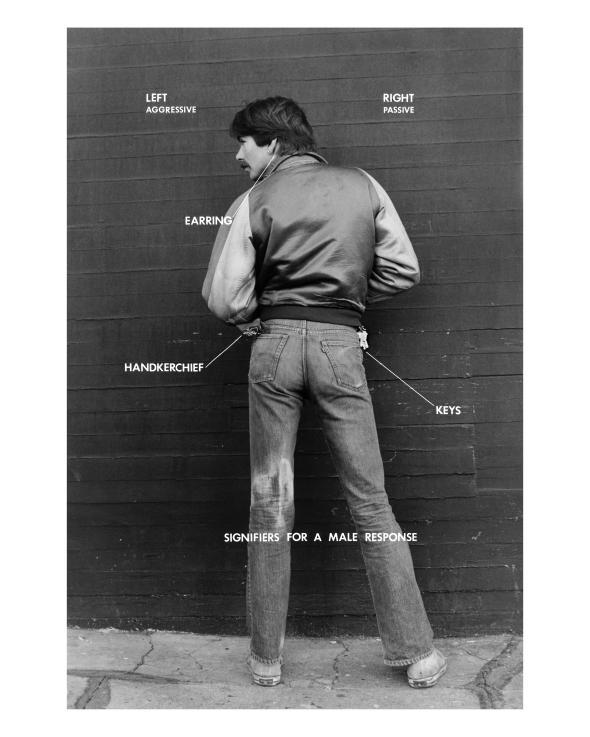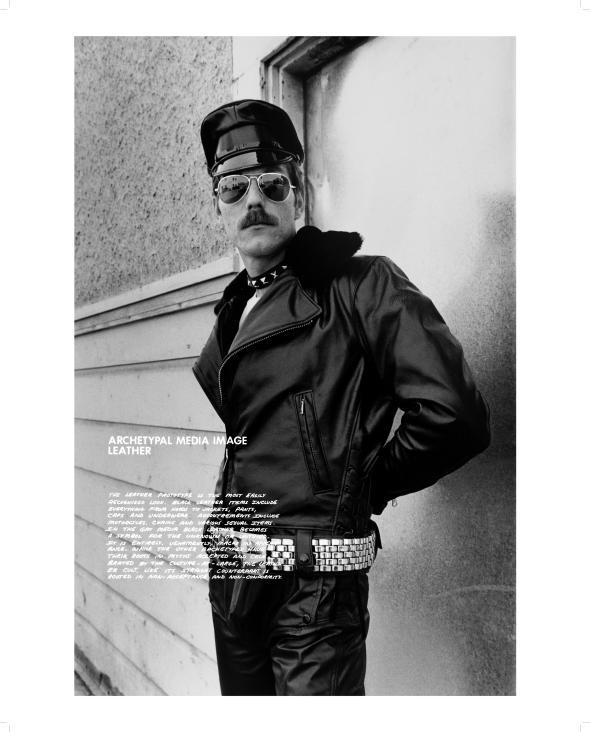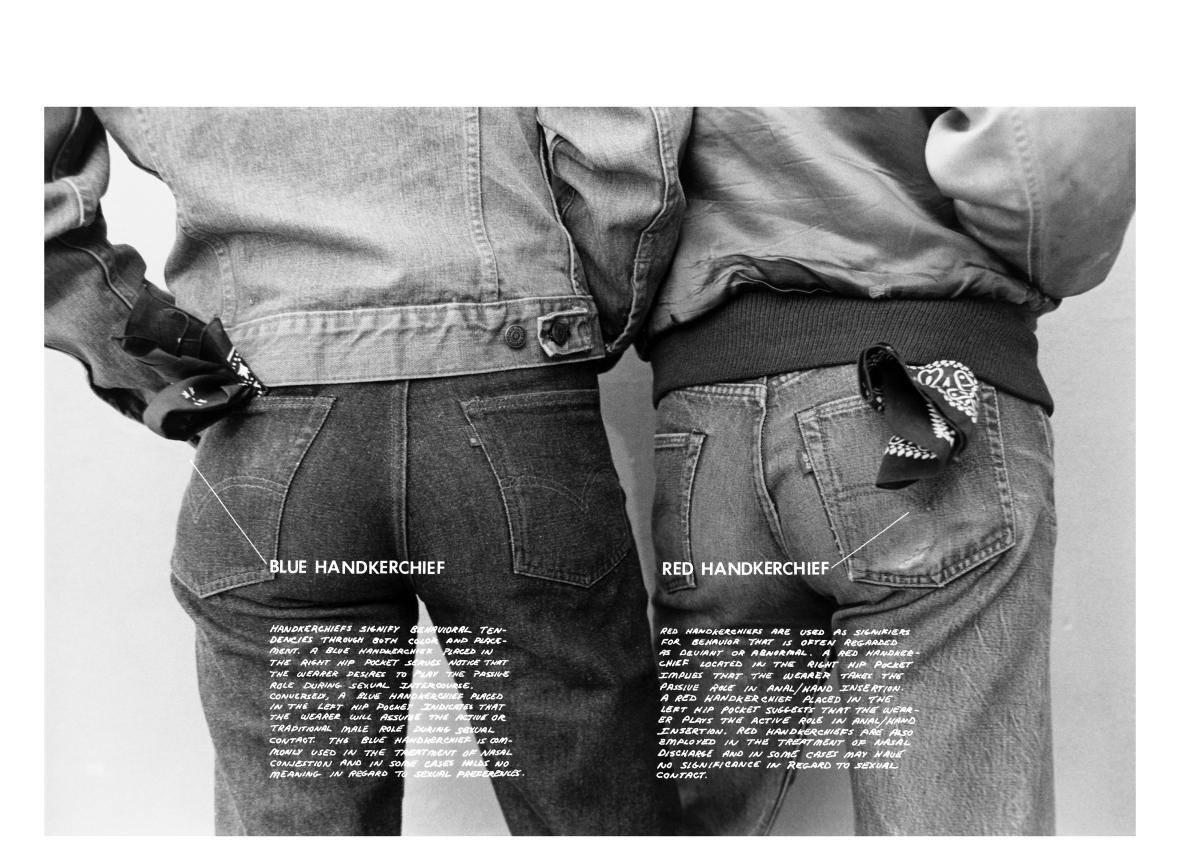For as long as there have been gay men, there has existed a division between those who value and participate in something called “gay culture” and those who decline to do so. If you or a loved one fall into the former campy camp this gift-giving season, consider picking up a copy of the new edition of Hal Fischer’s Gay Semiotics: A Photographic Study of Visual Coding Among Homosexual Men, published at the end of November by Cherry and Martin. Slate’s Behold photo blog ran a revealing feature on Fischer and the photographs the book comprises back last winter, when they were revived in a show in Los Angeles. Now anyone can own the images, which come packaged in a trim, minimalist volume accompanied by Fischer’s insightful and often fabulously droll essay.
Indeed, while the images themselves—which detail various sartorial cues (blue handkerchief in the right back pocket for bottom) and “sexual prototypes” (cowboy; leather queen) popular in the 1970s—are fascinating, it’s Fischer’s light-hearted anthropological work in the essay that really makes the book worth having. His early documenting of San Francisco’s gay subculture—which, at the collection’s original publication in 1977, had been busy with the effort of “developing its own myths, culture heroes, stereotypes, and sign language”—offers a useful window into a crucial moment in the development of the gay male imagination. Fischer also celebrates gay difference: “Gays have many more sexual possibilities than straight people and therefore need a more intricate communication system,” he notes in the course of explicating the signaling potential handkerchiefs, key chains, and earrings.

Courtesy of Cherry and Martin.
Thankfully, Fischer is aware that this baroque system is somewhat absurd, and he pokes fun at it from time to time. “The blue handkerchief,” he allows, after revealing its role in communicating anal sex positions, “is commonly used in the treatment of nasal congestion and in some cases holds no meaning in regard to sexual preference.” Similarly, while discussing the leather man style, Fischer politely points out that while the “subculture within a subculture” presents itself as “entirely, vehemently, macho” all that butch swagger holds up only “sometimes in reality.” Truer words …

Courtesy of Cherry and Martin.
While some of the styles Fischer documents have fallen out of fashion, a number are still in use in one form or another. (Many days I could stand in for the open hoodie and Converse-sporting “Basic Gay.”) And the rest constitute an important part of our cultural history: In fact, “Good Guys,” Mika’s anthem to gay history from earlier this year, referenced one of Fischer’s prototypes by name: “It’s not the cowboys that I’m missing anymore/ That problem was already old in ’94.” We don’t have to miss the semiotic moment Fischer documents, but that doesn’t mean we should forget it. The reissue of his groundbreaking, entertaining study should help ensure that we don’t.
